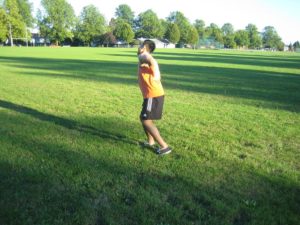Greater trochanteric pain syndrome involves the bursae and tendons bordering the greater trochanter. If there is damage to these structures, it triggers pain on the exterior of the thigh and buttock.
The condition is a combination of both gluteal tendon injuries and bursitis surrounding the hip joint. The main tendons that are affected include the gluteus medius and gluteus minimus muscles. The prevalent form of bursitis linked with the condition is trochanteric bursitis.

It is important to note that greater trochanteric pain syndrome might be due to direct injury from falling onto the side, extended burden to the hip region, repeated movements, engaging in unaccustomed rigorous activity, hip instability, weight-bearing on one leg for extended periods and from sporting injuries.
Indications
Greater trochanteric pain syndrome triggers pain over the greater trochanter that might radiate into the lateral leg or thigh. It is characterized by the “jump” sign in which palpating the greater trochanter causes the individual to nearly jump out of the bed.
The usual indications include:
- Pain or discomfort that is episodic in nature and worsens over time without continued aggravation
- Pain that is worse when lying on the affected side particularly at night time
- Muscle weakness of the hip
- Pain that arises after engaging in weight-bearing activities such as running or walking
Management of greater trochanteric pain syndrome
The treatment is aimed on managing the pain, establishing hip strength and control as well as allowing progressive return to activity.
- Application of ice, relative rest and techniques that unload the damaged structures
- Avoiding positions that lengthen the affected hip including crossing the legs, lying on either side and walking on cambered surfaces
- Various techniques are used by the physiotherapist to lower the pain and inflammation such as ice, soft tissue massage, electrotherapy, acupuncture and taping techniques to offload the damaged side.
- Localized corticosteroid injection
Once the pain and swelling settles, the next step is to restore the normal range of motion of the hip, muscle length and strength, balance, endurance and proprioception.
